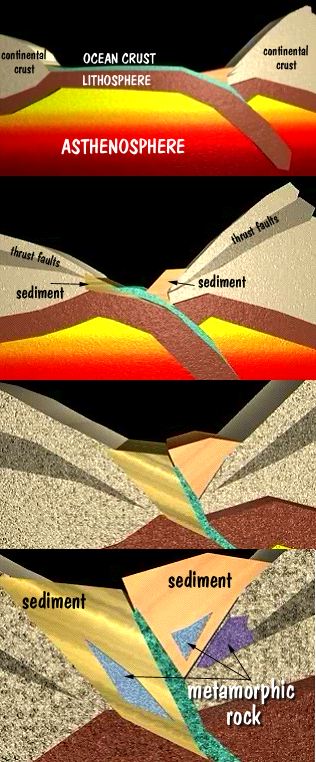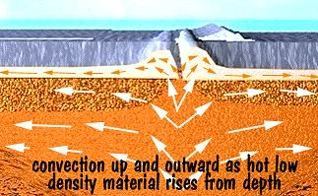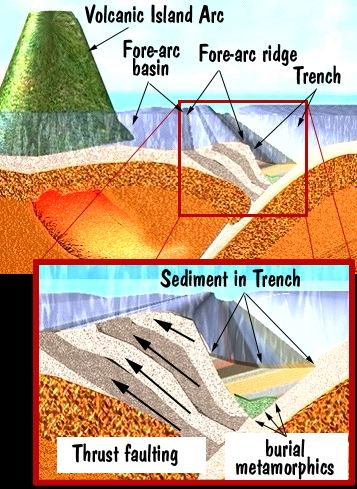
When continental plates collide, there is a fairly well documented series of events before, during and after the collision.
One plate will be the "non-moving" or maybe non-subducting plate is better. The other plate will carry the continent into the first and have a subducting edge.
As the two plates close the gap, the moving plate will have a large margin of deposited sediment in the leading edge. This material will contain some burial metamorphic rocks in the lower regions.
As the plates continue together, the sediment form the first (moving plate) will eventually combine with the sediment in the trench formed at its margin.
Some of the leading edge of the sediment may be subducted with the remaining ocean crust as the continents close. Some of the subducting crust may be pushed up and mixed with the sediment from both sides. As closure continues the sediment continues to rise and eventually there is a reverse pressure build-up in each direction.
The relative thickness of the two layers and their composition can be used as a gauge to determine where the sediment originated.As this increases there is thrust faulting in both the forward direction on the stationary continent and in the reverse direction on the moving continent. The sediment is reoriented during the compression and may be folded of just offset. The edge of the continent would also have the folded blueschist metamorphic common in high-pressure / low temperature environments. (prograde metamorphism). The margin between the two continents would end up containing all of these materials, and many new metamorphics caused by the compression and burial of the two sediment basins and those prograde materials already formed.
Over many millions of years the result would be a new mountain chain with a root created by the materials compressed together during the collision. Eventually this root could become an orogen. One easy way to tell that a current chain was made in this way, is that it will be far from a coast line and more likely in the center of a large land mass.

Spreading Margin
Oceanic ridge spreading center, upwelding of magma (basalt) creates ocean floor.
Transform Faults
Along the ridge they are created by different velocities of earth spin as you move from equator.

Ocean -
Ocean Crust
Mainly basalt from spreading center.
Lithosphere
Area that is chemically similar to asthenosphere but structurally more rigid. Carries the earths crust on the asthenosphere. Spreads from the center rise.


The remainder appears to move below and parallel to the lithosphere until it cools sufficiently to once again sink. (The cooling process increases its density. The convection currents provide the engine for spreading the surface.
Moving to one end of the spreading center we find an ISLAND ARC.
The spreading ocean crust and lithosphere now plunge below the lithosphere and crust of a stationary island/continental piece of crust.
Subduction
This is what we call the descending piece of lithosphere and crust which moves beneath the stationary mass.
Trench
A trench is the deformed ocean basin caught between the two pieces of lithosphere. Basically a very deep valley with steep sides. Over time it acts a like a giant waste can and id filled with the various sediments suspended in the ocean water. Burial
Near the base of the trench the pressure increases as does the temperature, and burial metamorphic rocks are created. (Low grade metamorphism.)
Across the trench a Fore-arc ridge is created by the upthrust caused by the pressure of the subducting lithosphere. These ridges typically contain thrust faulting of the ocean crust, some sediment from the trench and often some low grade metamorphic rock. This mixture is called a melange.
Behind the Fore-arc ridge is a Fore-arc basin that is bounded between the volcanic islands and the ridge.
| NEXT | TOC | PREV |